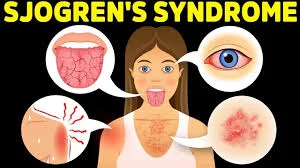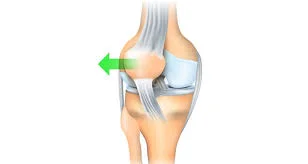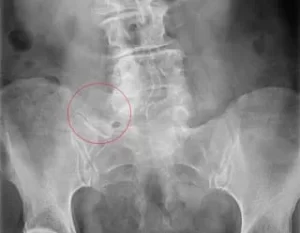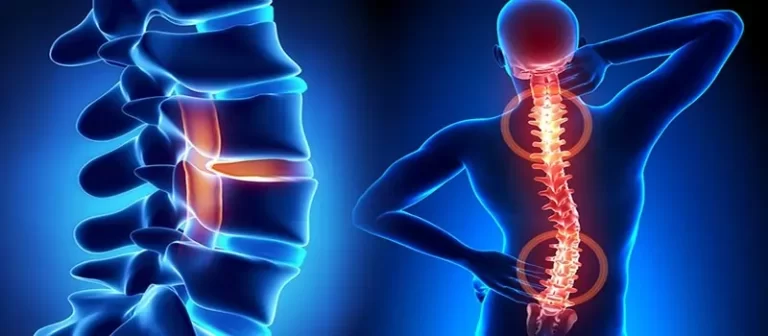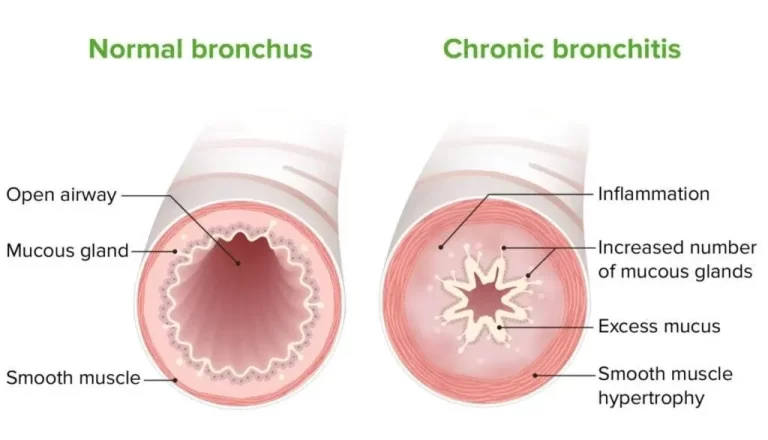Sjogren’s Syndrome
What is Sjogren’s Syndrome?
Sjögren’s syndrome is a chronic autoimmune disorder characterized by inflammation that primarily affects the salivary and lacrimal glands, leading to symptoms of dry mouth and dry eyes. Named after the Swedish ophthalmologist Henrik Sjögren, who first described it in 1933, this syndrome can also involve multiple other organs and systems, including the skin, joints, lungs, kidneys, and nervous system.
Sjögren’s syndrome is also known as SHOW-grins, The two most typical symptoms of Sjogren’s syndrome are dry eyes and a dry mouth. The glands responsible for producing moisture are attacked by your white blood cells, which are ordinarily there to defend you against infections. When that occurs, your mouth, eyes, and other body parts get dried because the glands are unable to generate saliva and tears. However, certain treatments do provide relief.
When you find out that you have a long-term medical condition that requires ongoing treatment, it is normal to feel nervous. Remember that the majority of Sjogren’s patients maintain their health and don’t experience any major issues. Without having to make many adjustments, you should be able to continue doing what you enjoy.
The condition frequently coexists with other immune system diseases like lupus and rheumatoid arthritis. Saliva and tears are usually decreased by Sjogren’s syndrome because it usually affects the mucous membranes and moisture-secreting glands in the mouth and eyes first.
Although Sjogren’s syndrome can strike anyone at any age, most patients are diagnosed when they are older than 40. In women, the condition is even more common.
When you have Sjögren’s syndrome, your body’s immune system attacks the glands that create and regulate moisture, such as those in your:
- Tear system.
- Mouth (Your salivary glands).
- Nose.
- Throat.
- Digestive system.
If you notice any new dryness in your mouth, eyes, or anyplace else on your body, see a doctor.
Sjogren’s syndrome types
Physicians divide Sjögren’s syndrome into two categories:
- Primary Sjögren’s syndrome does not come on from another medical disease; rather, it develops on its own.
- Secondary Sjögren’s syndrome occurs when Sjögren’s syndrome comes on by or is caused by a different disease.
Causes of Sjogren’s Syndrome
An autoimmune condition is Sjogren’s syndrome. Incorrectly, your immune system targets the tissues and cells in your body.
The disease known as Sjögren’s syndrome is autoimmune. When your immune system accidentally causes harm to your body rather than defense, it can lead to autoimmune diseases. Experts are unsure of the exact cause of Sjögren’s syndrome, which is an immune system attack on your glands.
Why some people develop Sjogren’s syndrome is unknown to scientists. A triggering mechanism, such as infection with a specific virus or strain of bacteria, appears to be necessary in addition to certain genes that increase an individual’s risk of developing the condition.
Your immune system targets the salivary and tear glands first when you have Sjogren’s syndrome. It can, however, cause damage to other bodily parts, including:
- Joints
- Thyroid
- Kidneys
- Liver
- Lungs
- Skin
- Nerves
There is currently no known cause or trigger for primary Sjögren’s syndrome.
Secondary Sjögren’s syndrome is caused by other medical disorders, including certain viral infections and other autoimmune diseases.
The following viral infections have the potential to cause secondary Sjögren’s syndrome:
- Hepatitis C.
- CMV, or cytomegalovirus.
- Virus Epstein-Barr.
- HTLV stands for human T-lymphotropic virus 1.
- COVID-19.
Secondary Sjögren’s syndrome can be caused by any autoimmune condition. Sjögren’s syndrome is associated with some autoimmune disorders, including:
- Rheumatoid arthritis.
- Psoriatic Arthritis.
- Lupus
Investigations have connected Sjögren’s syndrome to various diseases, however having these conditions does not ensure you will get Sjögren’s syndrome. Similar to this, having Sjögren’s syndrome may increase your risk of developing other autoimmune diseases, but it does not guarantee it.
Symptoms of Sjogren’s Syndrome
There are two main signs of Sjogren’s syndrome:
- Dry eyes. Your eyes can burn, itch, or feel rough like they contain sand.
- Mouth feeling dry. It can feel like there is cotton in your mouth, making it hard to swallow or talk.
Some people with Sjogren’s syndrome also have one or more of the following symptoms:
- Stiffness, edema, joint discomfort, Weakness, or discomfort in the muscles.
- Enlarged nodes of lymph and enlarged salivary glands, especially those in front of your ears and below your jaw
- Eczema or dry skin
- Vaginal Dryness
- Dry nose and frequent nosebleeds
- Prolonged fatigue
- Dry eyes or itchy eyes.
- Dry mouth (xerostomia), Mouth sores, thickened saliva.
- Dry throat (including coughing frequent)
Sjögren’s syndrome can also result in additional symptoms in addition to dryness, such as:
- Fatigue ( feeling tired at all times).
- Pain in the joints
- Difficulty speaking or swallowing (dysphagia).
- Brain fog, or difficulty concentrating or thinking.
- loss of Taste.
- Tooth decay (cavities)or loss.
- Skin Rashes.
- neuropathy.
- heartburn or other type of indigestion.
- light Sensitivity.
Diagnosis
A physical examination and specific tests will be used by a medical professional to diagnose Sjögren’s syndrome. While examining your body, they will inquire about your symptoms. Inform your doctor about the times you first noticed physical changes in your body as well as any activities or times of day that are aggravating your symptoms.
The signs and symptoms of Sjogren’s syndrome may vary from person to person and reflect those of other illnesses, making a diagnosis challenging. Certain indications and symptoms of Sjogren’s syndrome might easily be mistaken for side effects of other drugs.
Tests can be used to confirm the diagnosis of Sjogren’s syndrome and rule out other medical conditions.
Blood tests
Blood tests may be prescribed by your physician to look for:
- Levels of different kinds of blood cells
- Common antibodies associated with Sjogren’s syndrome
- Indications of inflammatory diseases
- Indications of a possible liver or kidney problem
Eye examinations
The Schirmer tear test is a tool your doctor can use to determine how dry your eyes are. To determine how many tears you produce, a little piece of filter paper is positioned under your lower eyelid.
A physician who treats eye conditions (ophthalmologist) may also use a slit lamp, an optical instrument, to inspect the surface of your eyes. He or she might put drops in your eye that will help you view corneal damage more clearly.
Imaging
Your salivary glands’ ability to function can be evaluated by certain imaging techniques.
- Sialogram. When dye is injected into the salivary glands in front of your ears, this particular X-ray may identify it. This process demonstrates the amount of saliva that enters your mouth.
- The scintigraphy of saliva. In this nuclear medicine test, a radioactive isotope is injected into a vein and its movement throughout your salivary glands is monitored for an hour.
Biopsy
To identify the being of inflammatory cell collections, which may be indicative of Sjogren’s syndrome, your doctor may also do a lip biopsy. A little sample of tissue from your lip’s salivary glands is taken for this test, and it is seen under a microscope.
Sjögren’s syndrome diagnosis is typically a component of a differential diagnosis. This means that before diagnosing you with Sjögren’s syndrome, your doctor will likely perform a few tests to rule out other diseases and possible causes of your symptoms. some other tests you might require are:
- A dental examination and cleaning.
- Urinalysis.
- Radiography.
You may need to consult with the following specialists:
- An expert in rheumatism.
- Specialists in eye care.
- A dental professional.
- An otolaryngologist is a specialist in the ears, nose, and throat.
Treatment of Sjogren’s Syndrome
The sections of the body affected by Sjogren’s syndrome affect the course of treatment. Patients with Sjogren’s syndrome regularly take over-the-counter eyedrops and increase their water intake to treat their dry mouth and dry eyes. But for some, prescription medication or even surgery is necessary.
Pharmacological
Your physician may suggest medications that, given your symptoms, include:
- Reduce the irritation in the eyes. If you have moderate to severe dry eyes, your eye doctor may recommend prescription eyedrops such as cyclosporine (Restasis) or lifitegrast (Xiidra).
- Increase the amount of saliva produced. Certain medications, such as pilocarpine (Salagen) and cevimeline (Evoxac), may induce an increase in saliva and possibly tears. Possible side effects include flushing, increased urination, stomach pain, and sweating.
- Take care of particular issues. If you start to suffer arthritic symptoms, you might benefit from nonsteroidal anti-inflammatory drugs (NSAIDs) or other arthritis therapies.
- Over-the-counter analgesics: Acetaminophen or nonsteroidal anti-inflammatory drugs (NSAIDs) are over-the-counter medications that can reduce swelling and relieve pain. Consult your provider before taking these drugs for longer than ten days straight.
- Treat symptoms throughout the area. A medication used to treat malaria called hydroxychloroquine, or Plaquenil, is frequently effective in treating Sjogren’s disease. Medication that reduces the immune system, including methotrexate (Trexall), may also be recommended.
Among the possible therapies for pain and other symptoms are:
- Corticosteroids: Prescription anti-inflammatory drugs that you will receive as injections or pills from your doctor.
- Immunosuppressants: Prescription drugs that lower the activity of your immune system and calm it down. Disease-modifying antirheumatic medications may be suggested by your physician (DMARDs)
Your doctor will recommend therapies to help you control your symptoms. Sjögren’s syndrome has no known cure, but your doctor can help you find a course of treatment that can reduce its effects on your everyday activities and quality of life.
The areas of your body that Sjögren’s syndrome affects will determine which treatments you need.
Among the popular therapies for dry lips, eyes, or vagina are:
- Artificial tears: To keep your eyes moist, your eye care professional may recommend lubricants, prescription drops, or over-the-counter (OTC) eye drops.
- Punctal plugs for dry eye surgery: To prolong the duration of the naturally occurring tears in your eyes, an ophthalmologist (eye surgeon) can surgically block part or all of your tear ducts.
- Saliva producers: To help your body produce more saliva, your dentist may recommend prescription drugs or over-the-counter saliva (spit) supplements. They might advise you to hydrate your mouth by chewing gum, drinking water throughout the day, or sucking on ice chips.
- Sjögren’s syndrome patients are more likely to experience dental health problems, so you may require more frequent cleanings, specialized fluoride treatments, or prescription toothpaste and mouthwash.
- Vaginal moisturizers and lubricants: To add moisture to your vagina daily or during sexual activity, your physician may recommend lubricants that are available over-the-counter or through prescription.
- Hormone therapy: To treat vaginal dryness caused by an imbalance in hormones, some people require hormone therapy, such as additional estrogen.
Physical Therapy
One useful part of a Sjögren’s syndrome treatment plan is physiotherapy. Sjögren’s syndrome has no known cure, however, Physical Therapy can help control some of its musculoskeletal symptoms, including:
- Joint pain
- Muscle stiffness
- Fatigue
Physical therapists may help with improving joint range of motion, strength, and flexibility. Additionally, they can impart exercises that reduce fatigue and improve general function.
For Sjögren’s syndrome, the following particular Physical Therapy treatments may be useful:
- Joint mobilization: To increase the range of motion and flexibility, the joints are gently moved.
- Exercises for strengthening: These can support the joints and increase muscle strength.
- Aerobic exercise: Walking and swimming are examples of low-impact aerobic exercises that can help to improve cardiovascular health and reduce fatigue.
- Hydrotherapy: Physical activity in the water can help relieve pain and stiffness, making it a good option for those with Sjögren’s syndrome.
- Cold therapy can help to reduce inflammation, while heat therapy can help to relieve pain and stiffness.
The following are some more suggestions for handling Sjögren’s syndrome:
- Take part in regular exercise: Exercising can help with mood, joint pain, and tiredness.
- Keep your weight in check: Being overweight can strain your joints more.
- Consume a nutritious diet: Eating a nutritious diet may improve your general health and well-being.
- Sleep well: One of the most common symptoms of Sjögren’s syndrome is fatigue. Your energy levels can be raised by getting enough sleep.
- Control your stress: Sjögren’s syndrome symptoms can get more harmful when you’re stressed. Try some effective stress-reduction methods, such as yoga or meditation.
Surgery
A quick procedure known as punctal occlusion, which closes the tear ducts that drain tears from your eyes, may help your dry eyes. To keep your tears fresh, silicone or collagen plugs are placed inside the ducts.
Risk Factors
People with Sjogren’s syndrome usually have one or more identified risk factors, such as:
- Age. Those over 40 are typically diagnosed with Sjogren’s syndrome.
- Sex. Sjogren’s syndrome is far more common among women.
- Rheumatic disease. People with Sjogren’s syndrome frequently also suffer from a rheumatic condition, such as lupus or rheumatoid arthritis.
Sjögren’s syndrome can affect everyone, however, certain individuals are more prone to it than others:
- Women and those born with a female sex assignment (AFAB). Over 90% of individuals suffering from Sjögren’s syndrome are AFAB. Although it’s far less prevalent, it may develop in people who were assigned male at birth (AMAB).
- Individuals with additional autoimmune disorders. Approximately 50% of individuals with Sjögren’s syndrome also suffer from at least one additional autoimmune disease.
- Those who are 45 to 55 years old. Sjögren’s syndrome can affect children, young adults, and individuals over 55, however, it typically affects adults in that age range.
- Those who are biological relatives of someone who has Sjögren’s syndrome. 10% of individuals who have Sjögren’s syndrome also have a direct relative—a biological parent or sibling—who also has the condition.
Prevention
Sjögren’s syndrome cannot be prevented because its cause is unknown. It is impossible to determine if or when someone will acquire it.
Your body’s moisture-producing glands are attacked by the autoimmune condition known as Sjögren’s syndrome. Sjögren’s syndrome does not have a cure, but there are things you can do to control your symptoms and avoid complications.
Here are some precautions you can take:
- Manage Dry Eyes: Throughout the day, use artificial tears to keep your eyes hydrated.
- Take punctal plugs, for example. These are tiny devices that are placed into the tear ducts to stop tears from getting away from the eyes.
- When you go to sleep at night, use an eyelid mask to help keep your eyes hydrated.
- Steer clear of wind, smoke, and dry areas.
Manage Dry Mouth:
- Manage Dry Mouth: Drink water to keep your mouth hydrated throughout the day.
- To increase salivation, chew sugar-free gum or suck on sugar-free sweets.
- To add moisture to the air at night, use a humidifier.
- To avoid cavities, do routine cleanings and fluoride treatments at your dentist.
- Practice good oral hygiene by scrubbing and brushing your teeth twice a day.
- Use toothpaste with fluoride.
Manage Dry Skin:
- Manage Dry Skin: Add moisture to the air by using a humidifier.
- Cool down with shorter showers or baths.
- Pat your skin dry as opposed to rubbing it dry.
- Regularly use a moisturizer.
Reduce fatigue:
- Reduce tiredness by taking regular breaks and pacing yourself.
- Make time to sleep.
- Keep up a healthy diet and take part in regular physical activity.
Complications
Complications from Sjögren’s syndrome can include:
- an elevated danger of infections in the mouth and eyes.
- abnormalities in the kidney or liver.
- Cancerous tumors in the lymph nodes are called lymphomas.
- respiratory issues that could be misdiagnosed as pneumonia.
- neurological issues involving the brain, spine, or nerves that result in numbness or weakness.
Your mouth and eyes are the most typical areas where Sjogren’s syndrome might cause difficulties.
- cavities in the teeth. You’re more likely to have cavities if your mouth is dry because saliva helps protect the teeth from the bacteria that cause cavities.
- infections with yeast. It is much more common for people with Sjogren’s syndrome to get oral thrush, a yeast infection of the mouth.
- vision issues. Blurred vision, corneal damage, and light sensitivity can all be symptoms of dry eyes.
Less common complications might affect:
- liver, kidneys, or lungs. Pneumonia, bronchitis, other lung conditions, kidney failure, liver cirrhosis, or hepatitis can all be carried on by inflammation.
- lymph nodes. Lymphoma, or cancer of the lymph nodes, is a rare side effect of Sjogren’s syndrome.
- Nerves. Your hands and feet may experience burning, tingling, and numbness (peripheral neuropathy).
The majority of Sjögren’s syndrome sufferers go through life without serious complications. If you have secondary Sjögren’s syndrome, you may be more susceptible to complications from the underlying condition. Find out from your provider what to anticipate.
Conclusion
You will likely need to manage your symptoms for the remainder of your life. However, as you find therapies that are effective for you, your symptoms should become less severe. As they develop methods of coping, people with Sjögren’s syndrome typically notice a decrease in the severity of their symptoms over time.
There is no known cure for the chronic autoimmune disease Sjögren’s syndrome. The priority is on symptom management and avoiding complications, even though it cannot be eliminated. This is an overview:
- Chronic illness: Sjögren’s is a long-term condition that needs regular attention.
- Control of symptoms: The goal of treatment is to reduce mouth, eye, and other dryness.
- Quality of life: A patient’s quality of life can be significantly improved by effective care.
- Regular observation: Medical check-ups are important to monitor the disease and modify treatment as necessary.
FAQs
How long will a person with Sjogren’s disease live?
Although a proper diagnosis of primary Sjogren’s syndrome can take up to seven years, life expectancy in this condition is similar to that of the general population. While life expectancy is usually not impacted, patients’ quality of life is, and often significantly
Is Sjogren’s ever resolved?
Although there is no cure, it is effectively manageable. Rarely, the disease may become more severe due to the involvement of organs like the kidneys and liver. Sjogren’s syndrome may occasionally be caused by lymphoma or cancer of the lymph glands.
Is Sjogren’s a disease of concern?
Some patients report severe symptoms, including fatigue and disabling pain. Although the risk of developing lymphoma is low, people with Sjögren’s syndrome are more likely to develop it.
Is Sjogren’s a disease of concern?
Some patients report severe symptoms, including fatigue and disabling pain. Although the risk of developing lymphoma is low, people with Sjögren’s syndrome are more likely to develop it.
If I have Sjogren’s, can I still lead a normal life?
Most Sjögren’s syndrome sufferers can anticipate leading normal lives because the condition’s symptoms are mainly manageable. The following advice can help you manage your Sjögren’s syndrome more easily. taking good care of your eyes. Keep your eyes safe from drafts, breezes, and smoke-filled spaces.
With Sjogren’s, which organ fails?
In addition to joint pain, fatigue, dry eyes, and dry mouth, Sjögren’s disease can lead to organ dysfunction, including the kidneys, gastrointestinal tract, blood vessels, lungs, liver, pancreas, and central nervous system.
What is Sjogren’s syndrome late stage?
The salivary and lacrimal glands are initially affected by the common autoimmune disease known as primary Sjögren’s syndrome (pSS). Lung and kidney damage are common in the later stages of the disease, and 5% of patients go on to develop lymphoma.
Which vitamins can be helpful for Sjogren’s?
Certain vitamins show promise in treating Sjogren’s syndrome, including vitamin D, vitamin B complex, vitamin C, and vitamin E. They could raise the general standard of living for those who suffer from this autoimmune condition.
How is Sjogren’s verified?
Medical professionals need to detect particular antibodies, or blood proteins, in your blood in order to diagnose Sjögren’s syndrome. Additionally, they must observe the inflammatory pattern that is typical of Sjögren’s syndrome, which is typically seen on the salivary glands on your lips.
References
- Sjogren’s syndrome – Symptoms and causes – Mayo Clinic. (2022, August 2). Mayo Clinic. https://www.mayoclinic.org/diseases-conditions/sjogrens-syndrome/symptoms-causes/syc-20353216
- Robinson, K. M. (2014, September 18). Sjogren’s Syndrome: Causes, Symptoms, and Treatment Options. WebMD. https://www.webmd.com/a-to-z-guides/sjogrens-syndrome
- Professional, C. C. M. (n.d.). Sjögren’s Syndrome. Cleveland Clinic. https://my.clevelandclinic.org/health/diseases/4929-sjogrens-syndrome

